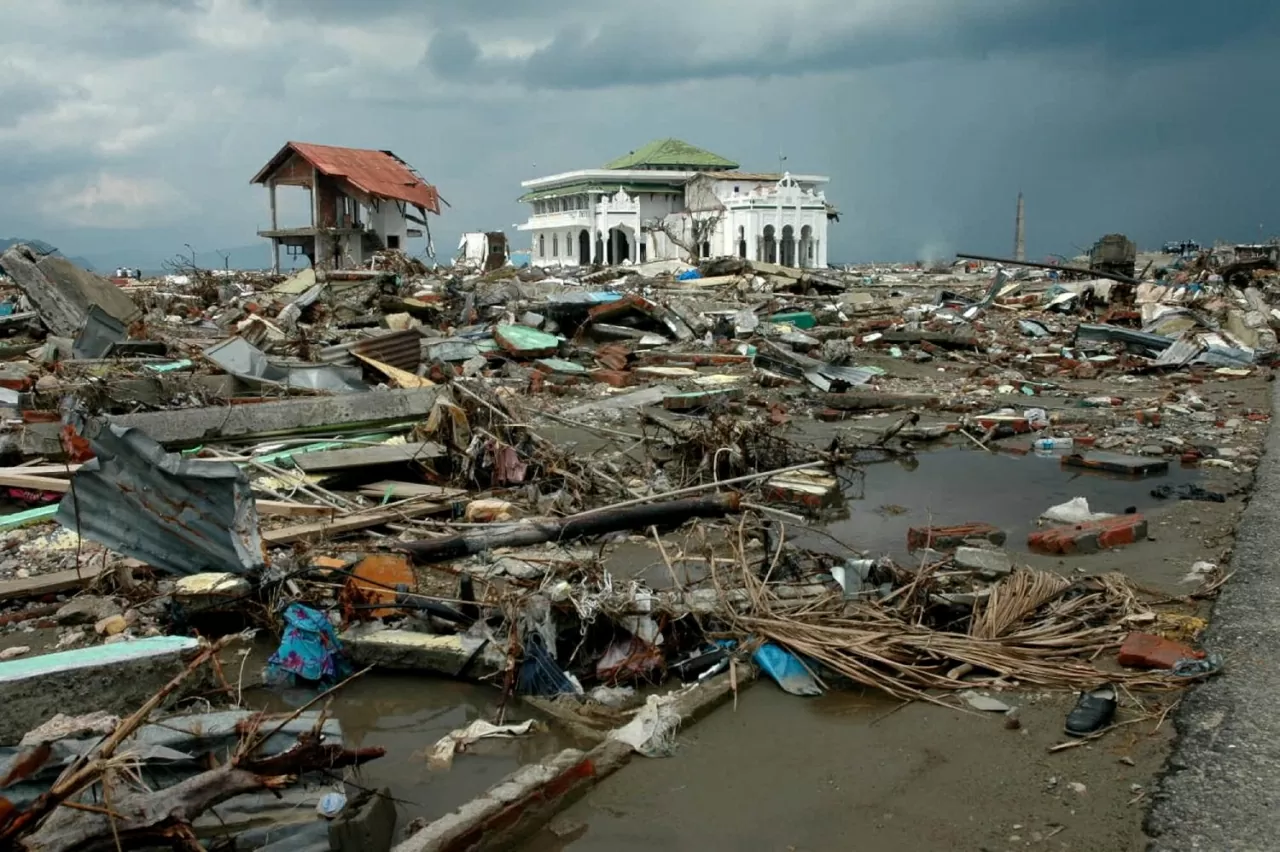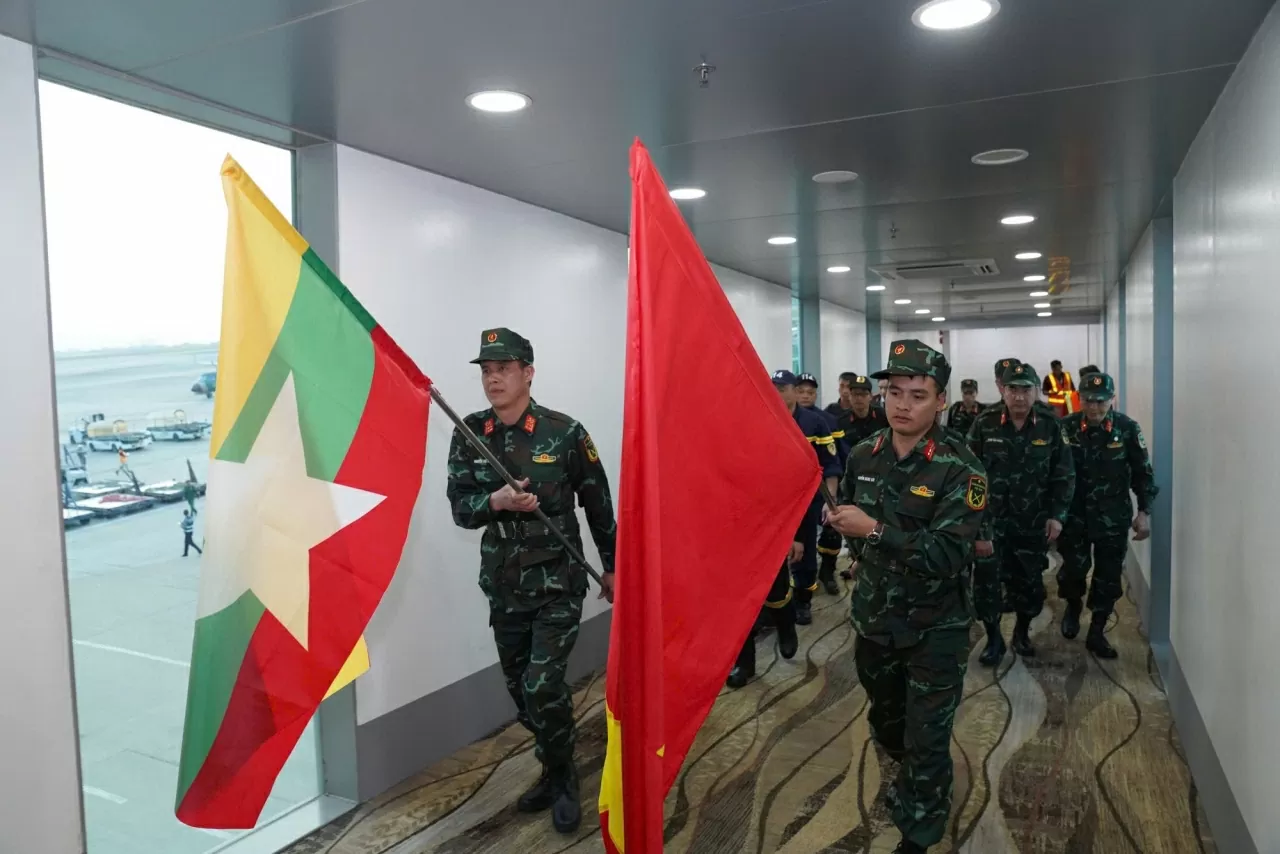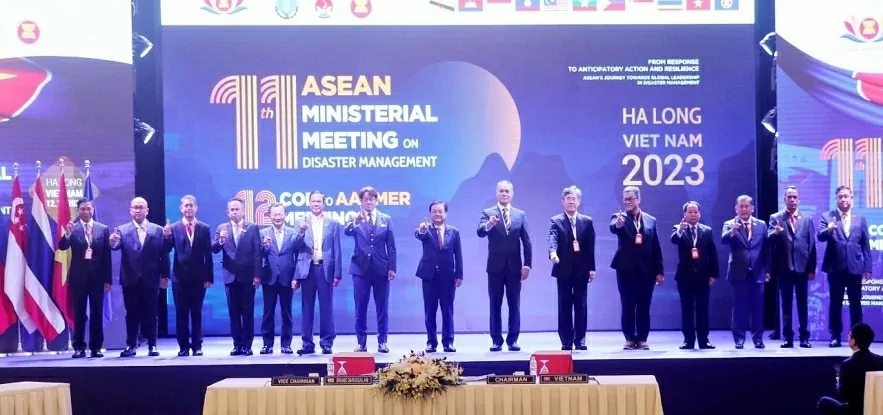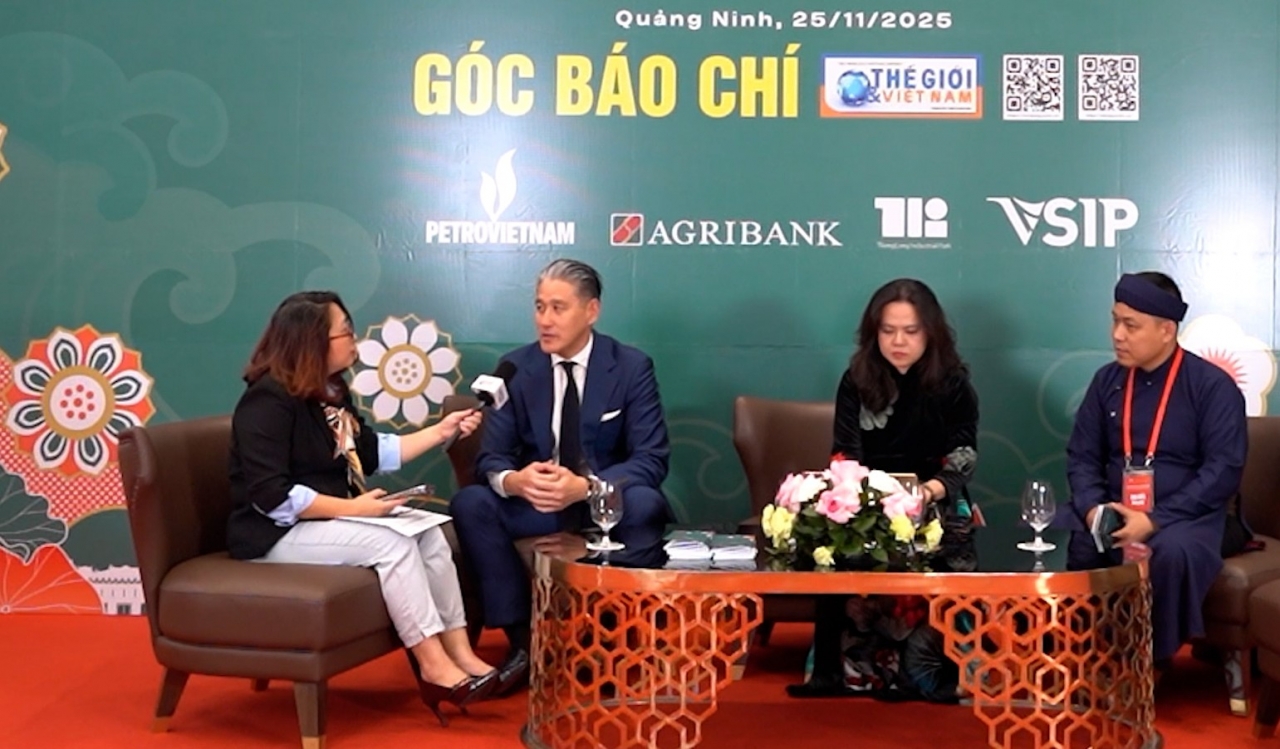
Vietnam's potential in advancing disaster management in ASEAN
Latest
ASEAN’s disaster management and current challenges
ASEAN is one of the most disaster-prone regions in the world in terms of intensity and frequency. This has posed a severe hardship on the region’s growing economy, resulting in a rise in the rate of mortality and the number of displaced populations.
It is, indeed, impressive that ASEAN has established an outstanding mechanism since the early 2000s, with the ASEAN Agreement on Disaster Management and Emergency Response (AADMER) as the backbone policy. The ASEAN Coordinating Centre for Humanitarian Assistance on Disaster Management (AHA) represents a collective efforts to cooperate, along with many other initiatives for the ASEAN Member States (AMS) to enhance their resilience. However, it is acknowledged that some vulnerabilities still exist in its system.
 |
| ASEAN is one of the most disaster-prone regions in the world in terms of intensity and frequency. (Photo: The ASEAN Magazine) |
In 2017, a report by the International Federation of Red Cross and Red Crescent Societies (IFRC) revealed that none of the 10 AMS refer to the roles AADMER or AHA in their national systems of law and policy on disaster risk management. This means the national disaster management laws are not yet considered the essential factor for AADMER implementation in ASEAN, which can result in weak institutionalization of AADMER at the national level, even though disaster management is a matter which requires a multi-sectoral approach with close cooperation and supervision between ASEAN and AMS.
Furthermore, it is necessary to question whether the existing system's institutions and governmental authorities are sufficiently broad for AADMER implementation and to achieve the “One ASEAN, One Response” motto of ASEAN.
ASEAN’s affirmation that “subnational entities, such as cities and provinces, are key players in disaster management” can be challenged because not all the AMS have decentralized local government powers or structures due to the divergent legal framework among the AMS. This can ultimately lead to delayed response times and a lack of localized disaster preparedness and mitigation.
Timely action
Recently, Myanmar suffered a destructive earthquake, with severe damage including at least 500 missing people, 4,243 injured, and 3,838 deaths nationwide. The 28 March earthquake, with its epicenter ~16 km West of Mandalay City in Sagaing Township, was the largest earthquake in Myanmar in over 100 years.
| More from WVR |
 Promoting disaster risk reduction, climate resilience and child protection in Cao Bang province Promoting disaster risk reduction, climate resilience and child protection in Cao Bang province |
Vietnam has immediately sent urgent aid, including 300,000 USD, along with a package of antibiotics, digestive and flu medicines, and essential medical devices such as blood pressure monitors, glucose meters, bandages, and disinfectants. Notably, Vietnam also dispatched more than 100 rescuers from the Ministry of National Defence and Public Security to support Myanmar in dealing with the aftermath of the earthquake. From March 30 to April 8, the team worked tirelessly and was recognized as one of the most effective international aid contingent on the ground.
Beyond providing relief, the Vietnam force also actively shares its rescue experience in challenging circumstances, enhancing rescue efficiency. While disaster risk reduction is one of ASEAN's top priorities for achieving the goals of the Sendai Framework for Disaster Risk Reduction, as well as the 2030 Sustainable Development Goals, Vietnam has the resources, experience, and credibility to contribute more effectively to ASEAN’s disaster management system:
Firstly, as a country frequently affected by natural disasters, Vietnam has consistently and promptly responded to and addressed the consequences of these disasters through a robust mechanism. In Vietnam, the disaster management mechanism is quite multi-layered and comprehensive, with the National Civil Defense Steering Committee and two standing agencies: the Standing Office of the National Committee for Incident, Disaster Response, and Search and Rescue (under the Ministry of National Defence) and the Directorate of Disaster Prevention and Control (under the Ministry of Agriculture and Rural Development).
 |
| In response to the emergency situation in Myanmar following the devastating earthquake, the Ministry of Public Security and the Ministry of National Defence of Vietnam promptly deployed forces to assist the Myanmar people. (Photo: VGP) |
These departments are well-coordinated under two important mottoes: “Ba sẵn sàng” (Three readiness) and “Bốn tại chỗ” (Four On-site). “Three readinesses” include Proactive Prevention, Timely Response, and Swift and Effective Recovery. These mottoes have also thoroughly explained the mechanism for dealing with natural disasters in Vietnam. Vietnam is always well-prepared for the worst-case scenario. The “Four On-site” includes On-site Command, On-site Personnel, On-site Equipment and Materials, and On-site Support. This principle ensures that all responses are time and cost-efficient.
Secondly, apart from a robust mechanism, Vietnam also owns a well-trained military force with hands-on experience in disaster humanitarian assistance. The “Document on the Concept of Utilizing Military Resources and Armed Forces in Humanitarian Assistance Operations” (4th ADMM in 2010) also emphasizes that the participation and rapid response capability of the military have proven to be an effective tool. Last year, in 2024, Vietnam endured the Yagi typhoon, causing devastating consequences of 323 fatalities and more than 3 billion US dollars in damages.
Notwithstanding that this was one of the most catastrophic and unprecedented typhoons in Vietnam's recorded history, Vietnam's reaction was remarkably quick, owing to the two aforementioned mechanisms. Moreover, it is important to note that without close cooperation between the military forces and the people, these mechanisms would not be effective. Besides 75,000 regular troops, there were also more than 284.000 militia and self-defense forces that were mobilized to support during the Yagi typhoon.
Commitment to ASEAN’s disaster management
Firstly, Vietnam has consistently demonstrated itself as an active and highly regarded member of ASEAN in the area of disaster management cooperation through its participation in ASEAN’s initiatives. Vietnam has been a member of the ASEAN Committee on Disaster Management (ACDM) since its establishment in 2003, serving as the primary regional body responsible for disaster management, and signed the AADMER in July 2005.
In addition, Vietnamese representatives have also actively contributed to other regional forums addressing disaster-related issues, such as the ASEAN Regional Forum (ARF) and the ASEAN Defence Ministers’ Meeting Plus (ADMM-Plus). In recent years, Vietnam has also supported fellow ASEAN member states in responding to disasters and participated in ASEAN’s humanitarian assistance to Myanmar following Cyclone Mocha in 2023, under the guidance of ASEAN leaders.
 |
| Ministers and Deputy Ministers of ASEAN member countries attended the 11th ASEAN Ministerial Meeting on Disaster Management in Ha Long city, Quang Ninh province on October 12, 2023. (Photo: VNA) |
Secondly, Vietnam has fully leveraged its strengths in prevention and preparedness through its hosting. Accordingly, in 2023, as Chair of the ACDM, Vietnam promoted the theme: "From the response to early action and resilience: ASEAN towards global leadership in disaster management", emphasizing a shift from reactive response to proactive prevention in disaster management, which received high approval from the Member States. At the 11th ASEAN Ministerial Meeting on Disaster Management (AMMDM) hosted in Quang Ninh, Vietnam, in October 2023, ASEAN countries adopted the Ha Long Declaration on Early Action in ASEAN Disaster Management.
Lastly, Vietnam has valuable resources, knowledge, and experiences acquired from its partners which can be effectively applied in ASEAN’s multilateral frameworks. Remarkably, the Vietnam Disaster Management Authority (VNDMA) and the Japan International Cooperation Agency (JICA) have published the “Priority Program for Disaster Risk Reduction in Vietnam” (2024) with six programs focusing on establishing systems, prevention, adaptation, and coordination.
Also, Korea supports Vietnam in two significant projects named “Community Capacity Building” and “Flood Warning Information Technology" regarding staff training.
Recommendations for Vietnam
ASEAN requires a more robust cooperation to ensure preparedness and an effective response, presenting a distinct opportunity for Vietnam. To reinforce its role within ASEAN’s disaster management system, Vietnam can consider a series of actions that strengthen its leadership and promote regional cooperation and collaboration.
First, Vietnam has the potential to lead and initiate joint exercises focused on disaster response as well as search and rescue operations. It could organize intra-bloc forums for the exchange and sharing of expertise to ensure and foster seamless coordination among ASEAN member states.
These experiences may promote the integration of ASEAN procedures for disaster management into each member’s domestic system, thereby contributing to the overall efficiency of disaster management. This is of particular significance given the diverse geographical landscapes and varying legal frameworks prevalent within ASEAN.
Second, Vietnam can encourage nations to contribute more substantially to ASEAN’s mechanisms. As weak institutionalization at the national level is an outstanding issue. Therefore, enhancing the role of disaster response mechanisms in ASEAN, such as AHA and AADMER, is the most urgent and important mission for ASEAN. Vietnam can push for the mainstreaming of AADMER and AHA roles in AMS’s national law and policies in essential collective aspects such as financial and human resources, as well as technology.
 |
| Vietnam can set a good example in enhancing emergency response by decentralizing and downsizing its organisational structure. (Photo: France 24h) |
Third, Vietnam can propose the integration and further refinement of these mechanisms within ASEAN's existing disaster crisis management framework. Taking Vietnam’s “Three Readinesses” mechanism as an example, this mechanism highlights the importance of long-term forecasting and disaster preparation, which should be incorporated into ASEAN’s disaster management mechanism.
Additionally, Vietnam can set a good example in enhancing emergency response by decentralizing and downsizing its organisational structure. By granting more authority to local governments, utilizing local forces, and strengthening cooperation between the military and militia, a swift, comprehensive, and adaptable response to disasters can be formed.
Those aforementioned presents a distinct opportunity for Vietnam to more clearly demonstrate its proactive engagement and enhanced contribution to the collective endeavors of ASEAN, thereby “assisting the organization in materializing its historical mission”, as Vietnam's Party General Secretary To Lam has claimed in his Policy Speech at the ASEAN Headquarters this March 2025.
As ASEAN continues to face growing and complex disaster challenges, a more integrated, proactive, and coordinated approach is needed to strengthen the region’s resilience and response capacity. While ASEAN has laid a solid foundation through AADMER, AHA Centre, and related mechanisms, persistent institutional gaps and disparities among member states pose significant barriers to effective disaster management. In this context, Vietnam emerges not only as a committed and capable responder, but also as a potential leader in shaping a more robust and inclusive ASEAN disaster management framework. With its extensive experience, strong civil-military coordination, and well-established local response systems, Vietnam is well-positioned to spearhead initiatives that promote synergy, institutional coherence, and practical implementation across the region. By actively contributing to the operationalization of ASEAN mechanisms, sharing its best practices, and fostering closer intra-bloc collaboration, Vietnam can play a pivotal role in advancing ASEAN’s collective resilience and in fulfilling the vision of “One ASEAN, One Response.”

















